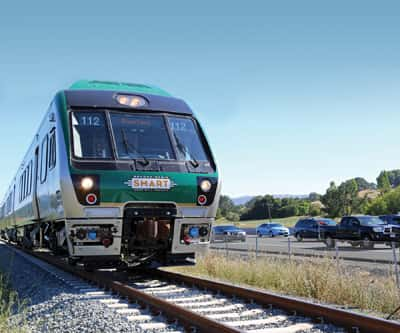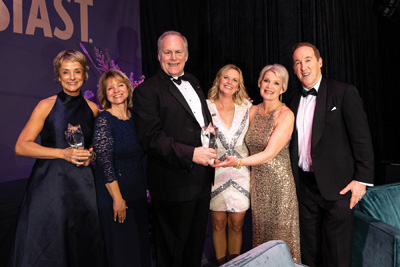We have a widening achievement gap in our schools, created primarily by economic circumstances and lack of pre-kindergarten engagement.
Almost everyone in the North Bay has heard of Frank P. Doyle, the late chairman and majority shareholder of Exchange Bank. He made many notable contributions to the North Bay, including championing the building of the Golden Gate Bridge. Most would agree that his greatest single contribution to the community was as the father of workforce development. Through his vision, he established the Doyle Scholarship in the 1940s to help make college a realistic goal for young men and women attending Santa Rosa Junior College.
Fast forward 75 years, and the North Bay workforce development landscape looks entirely different. In most families, both parents need to work to make ends meet; quality child care and preschool is beyond the economic reach of most; roughly half the kids entering public school have had little or no preschool experience; and for many, English is not the primary language spoken at home. We have a widening achievement gap in our schools, created primarily by economic circumstances and lack of pre-kindergarten engagement.
At the same time, the business community is demanding that the young adults graduating from our public and private educational institutions be equipped with the skills necessary to help local companies compete in an increasingly global marketplace. And we’ve been vocal in pointing out the areas in which these young adults aren’t adequately prepared (soft skills, language and writing proficiency, socialization, personal responsibility, leadership, initiative and so on).
If Doyle were alive today, given his vision, innovation and acute ability to invest wisely, I’d suggest that instead of assisting with college costs, the trust named after Frank and his wife, Polly, would instead be designated to make quality early childhood education affordable for all Sonoma County families.
Study after study, conducted all around the world and, without exception, have shown that the smartest place to invest in our workforce is in their early years. Returns on investment exceeding 700 percent are not uncommon. Most of the money realized in these cases comes through greatly reduced social costs in treating the symptoms of a society that doesn’t invest in its youth, including crime, incarceration, gang activity and drug abuse and treatment.
So, where is that champion of workforce development today, with hundreds of millions of dollars to invest in a fund to make quality child care and preschool affordable for all?
No single individual can take this on. The true answer will have to come from the collective will of the community. The biggest obstacle to making substantial progress in this area locally appears to be indifference or apathy on the part of the business community. How do we get our business leaders involved and aware of these challenges?
There are myriad things business decision makers can do, some of which are painless and immediate. How about adding a dependent care element to your cafeteria plan to let working parents defer tax-free dollars that can be used to pay for child care expenses? Or, what about providing flexible scheduling or an alternative work period option, so working parents can have an opportunity to coordinate drop-off and pick-up of their child or can maximize the value of their child care arrangement? There are also group tours and walk-through events coordinated by the Santa Rosa Chamber of Commerce to let employers see first-hand some of the challenges faced by working parents and child care providers today.
A longer-term approach for larger employers would include engaging a local preschool or day care provider to be a “default” center for employees’ children, and to even conduct a cost-benefit analysis for bringing a child care center in-house.
Of course, there’s always the financial challenge. It costs between $5,000 and $10,000 per year for most preschool programs per child, depending on full day vs. partial day, and high-quality care vs. lesser-quality care.
One thing the business community can do to help out right now is to participate in a scholarship program called the Value in Preschool (VIP) program. Funded through First Five of Sonoma County, it provides aid to eligible working families to fund preschool costs. Some preschool education is always better than none, so every little bit will help. You can even sponsor a room at a center, an instructor or the whole facility.
For more information, contact Lara Magnusdottir of the Community Child Care Council of Sonoma County at (707) 522-1413, ext. 124, or at lmagnusdottir@sonoma4cs.org.
Or, just find the next Frank P. Doyle.
Bob Reynolds is co-founder of Innovative Business Solutions, Inc. in Rohnert Park, a human resources, payroll and time and labor management firm. He’s a former division chair of the Santa Rosa Chamber of Commerce workforce development program, having been involved with the chamber’s WHEEL program. He’s a former member of the county’s Workforce Investment Board and is currently a board member of the Roseland Charter School District.



